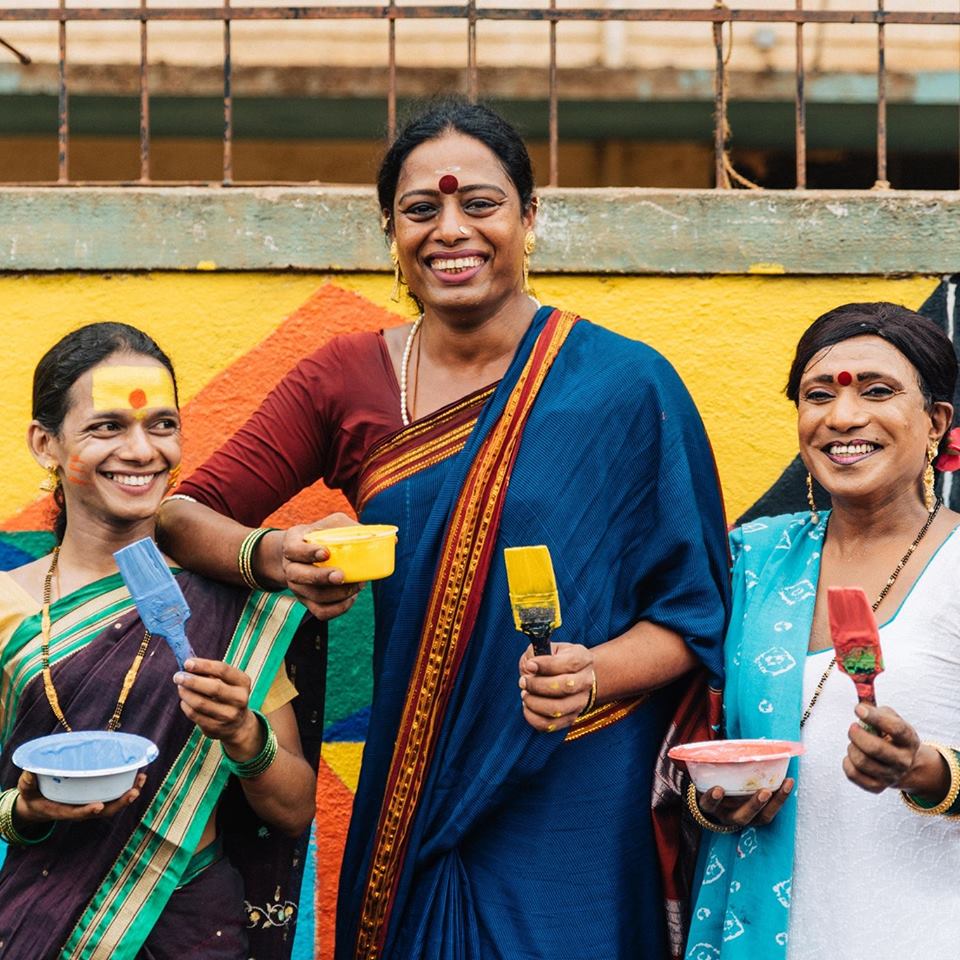
The Aravani Art Project is a Trans-women and cis-women led art collective in India. We aim to create a collective space with the people from the transgender community by engaging them into public art and other artistic interventions. We examine their spaces, places of history, innovation and create a room to learn by transforming their inputs into work of art. While the visibility of the transgender community is increasing in popular culture, they still face severe discrimination, stigma and systemic inequality in their daily life. With a mission of attempting to reduce this in society, we want to bring about a change in the way society views the community.
What would it mean to have shared spaces when we think of the future?
“A lot of us have experienced the world online—more so during the two major lockdowns. We felt together virtually. It feels strange but that’s the reality. As a community we used to meet and always be together in person, but now we feel together virtually more.” As told by Jyothi.
How do we share knowledge in a more equal manner? Whose knowledge is privileged and how do we want to change that?
“I feel that knowledge can be shared in an equal manner only when there are enough opportunities. Only the rich and the privileged are mostly in the place of making decisions, how often have you heard a sex worker knowledgable. I don’t think I know how to change this, but creating spaces, choices and equal opportunities can be a starting point.” As told by Purushi.
What would the future look like if everyone’s experience and knowledge was welcomed? If everyone’s voice was heard?
“It would be like living in harmony. It would be a collective effort to learn and teach each other. If everyone was heard, there would be so much more empathy and peace that would prevail. But it almost exists in the world of Instagram, Tik-Tok or Facebook. People are seen, heard, criticised or appreciated. All of it exists out of reality.” As told by Thara.
What would the future look like if it honoured/supported your well-being?
“It has taken several years for us transgender people to be comfortable in our own skin, and when we became comfortable, everyone else was so uncomfortable with our existence. We were not respected as human beings and were discriminated against for so long. We became a close knit community because we at least had each other. The feeling of loneliness really overtakes all others in many ways. Our solace with our own kind brings us some relief. Nowadays people are more aware and are getting the basic dignity to live, some job opportunities and basic respect. This is prevalent only in some cities with enough awareness and privileges. We still have a long way to go. First is survival, then only can we think about well-being.”
How can we represent the strength of community?
“The strength of a community lies in its unity. For example, I love attending various religious festivals. It makes me feel like I am with my community and doing what we love. It is always special to show that togetherness and sisterhood that we share.” As told by Sandhya.
How can we bring care back to our relationship with the Earth and each other?
“I might not have the answer to this question directly, but we have gone so far away from nature. Now we have to rethink our relationship with the earth. We are always living in a virtual world and constantly comparing ourselves to each other, out of which we don’t know so many of them. But we are believing the internet more than the real world. It is both good and bad. People have become more aware because of the internet, but yet when we need to be there in person a lot of them are not coming. It is both a pain and boon. Everything needs to have a moderation. We need to use the internet wisely and not be absorbed by it.” As told by Chandri.

